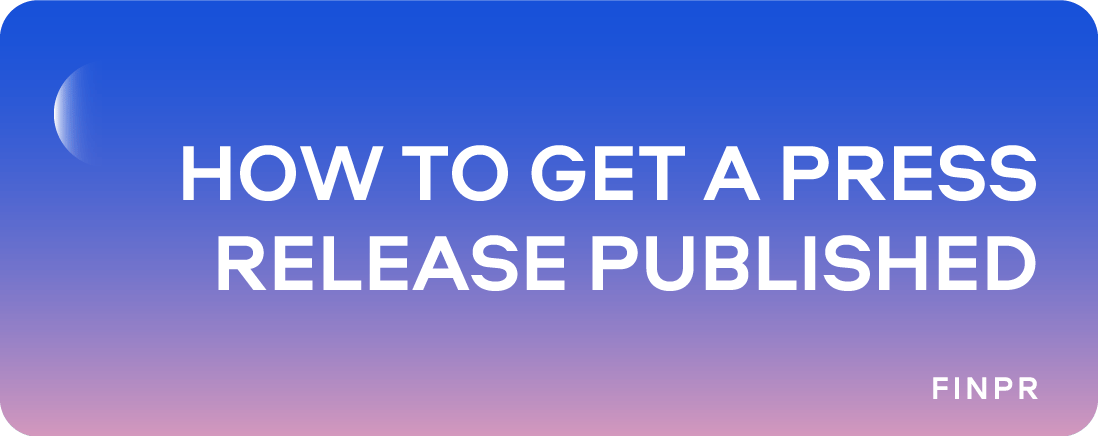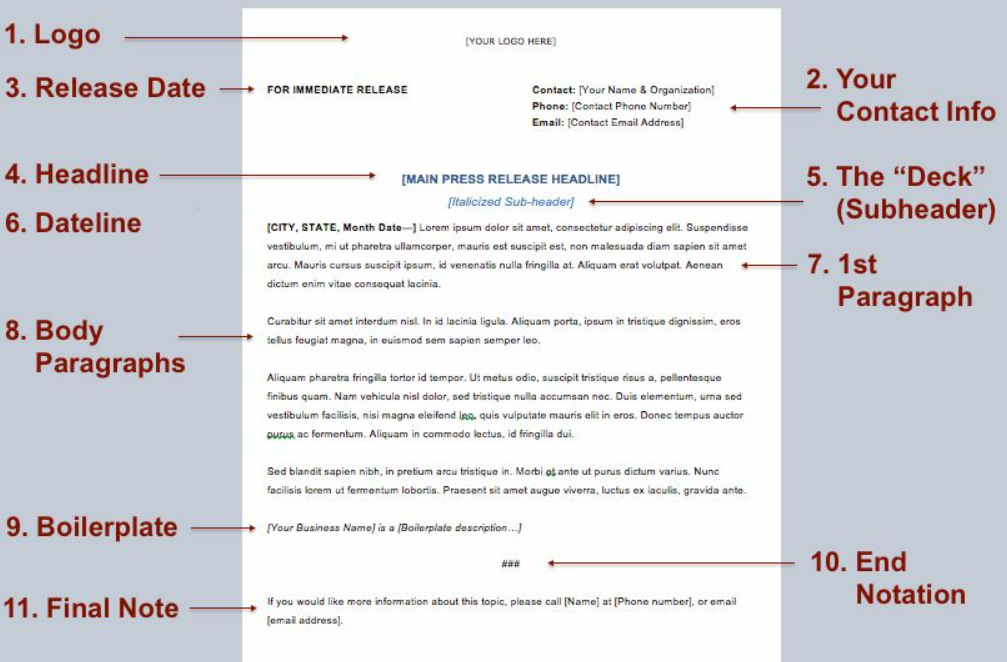
In today's competitive market, enhancing brand awareness through effective communication strategies is crucial. A vital approach is to send a press release to journalists and submit a press release to targeted media outlets. This method ensures that the key features and benefits of your product or service are clearly communicated to the public.
To effectively cover your story, it's important to find journalists who are most likely to be interested in your news. By identifying and engaging with these journalists, you can increase the likelihood that they will cover your story, thereby significantly boosting your brand awareness and media presence.
Whether you're a PR pro or new to media relations, this guide equips you with the knowledge and tools to navigate the process. Understanding these steps boosts your chances of media coverage, helping your message cut through the noise.
Understanding the Basics of a Press Release
Definition of a Press Release
A press release, also known as a news release, is a concise, compelling written statement directed at members of the news media to announce something significant and newsworthy. Typically structured in a standardized format, a press release aims to highlight the most critical information at the beginning, using an inverted pyramid style of writing. This format includes a headline, a brief introduction summarizing the news, the body containing detailed information, and a boilerplate with background about the company or individual issuing the release.
The content of a press release can vary but often includes announcements such as product launches, events, awards, new partnerships, significant hires, or any other noteworthy developments within a company or organization. The language used is usually formal and factual, designed to provide journalists and editors with the essentials they need to develop a news story.
Purpose of a Press Release
The primary objective of a press release is to garner media attention and get the story published or broadcasted by news outlets. This media coverage helps in reaching a broader audience, which might not be possible through internal channels alone. The goals of issuing a press release include:
- Generating Publicity: By sharing newsworthy content, organizations aim to gain visibility and attention from the public, stakeholders, and potential customers.
- Building Brand Image: Regular press releases help in shaping the public perception of a company or individual, highlighting their achievements, advancements, and contributions to their field or community.
- Managing Public Relations: In times of crisis or controversy, a press release can be a tool for damage control, offering a platform to present facts and counteract negative publicity.
- Supporting Marketing Efforts: Press releases can complement marketing campaigns by providing an authoritative source of information about products, services, or events, thus aiding in promotional efforts.
- Search Engine Optimization (SEO): With the digitalization of media, press releases published online can improve SEO, driving more traffic to a company’s website and increasing online visibility.
- Establishing Thought Leadership: Regular press releases on relevant topics can position a company or individual as an expert in their field, enhancing credibility and authority.
Crafting a Compelling Press Release
Crafting a compelling press release is a key skill for any organization looking to communicate effectively with the media and the public.

Here's a guide on how to write an effective press release:
1. Understand Your Audience and Purpose
- Target Audience: Identify who you want to reach with your press release. This could be journalists, industry professionals, or the general public.
- Purpose: Determine the purpose of your press release. Are you announcing a new product, sharing company news, or responding to an event?
2. Create a Captivating Headline
- Attention-Grabbing: Your headline should be clear, concise, and compelling. It’s the first thing readers will see, so make it count.
- Relevant and Informative: Ensure the headline accurately reflects the content of your press release.
3. Write a Strong Lead Paragraph
- The 5 Ws: In the first paragraph, answer the who, what, when, where, and why. This is critical information that sets the stage for your news.
- Engaging and Concise: Keep it brief yet engaging. The lead paragraph should hook the reader and encourage them to read further.
4. Provide Detailed Body Content
- Key Information: Expand on the details of your news. Include quotes from key personnel, data, and any relevant context.
- Clear Structure: Organize the content logically. Use short paragraphs and bullet points for easy reading.
5. Include Quotes for Personal Touch
- Authority Voice: Quotes from company leaders or relevant stakeholders add a personal touch and authority.
- Relevance: Make sure the quotes are relevant and add value to your message.
6. Add a Call-to-Action (CTA)
Encourage readers to take action, whether it's visiting your website, attending an event, or contacting your organization for more information.
7. Proofread and Edit
Check for grammatical errors, spelling mistakes, and factual inaccuracies. Ensure the press release is clear and easy to understand.
8. Distribution
Send your press release to relevant media outlets, journalists, and platforms. Consider the timing of your release to maximize impact.
FINPR's copywriters know their way around all the major business and finance publications. Our team has extensive experience in preparing press releases and will write them in such a way as to maximize the impact of the event or any other newsworthy event.
Targeting the Right Audience and Outlets
Identifying Your Audience
Understanding who needs to read your press release is a critical step in ensuring its effectiveness. Identifying your audience helps tailor your message, choose the right media outlets, and increase the likelihood of your press release resonating with the intended recipients. Here are key strategies to identify and understand your target audience:
- Segment Your Audience: Break down your audience into segments based on demographics, interests, profession, or geographic location. For example, if your press release is about a local event, your primary audience might be the local community and regional media.
- Research Media Consumption Habits: Understand where your audience gets their news. Different demographics have different preferences – some may rely on traditional media like newspapers and TV, while others might turn to online platforms, blogs, or social media.
- Use Audience Insights Tools: Leverage tools and analytics available on social media platforms, Google Analytics, or other marketing software to gain insights into your audience's preferences and behaviors.
- Competitor Analysis: Look at where your competitors are sending their press releases and the kind of coverage they are getting. This can provide clues about where your potential audience might be.
- Feedback and Surveys: If possible, gather feedback from your current customers or audience about where they consume news and what kind of information they find valuable.
- Align with Your Marketing Personas: If your organization uses marketing personas, align your press release audience with these personas to ensure consistency in messaging across all platforms.
- Consult with PR Professionals: If available, use the expertise of public relations professionals who can offer insights and advice based on experience and industry knowledge.
By thoroughly understanding who needs to read your press release, you can more effectively tailor your message and choose the appropriate channels for distribution. This targeted approach not only enhances the relevance of your press release but also increases the chances of it being picked up and shared by the media, thereby reaching your intended audience effectively.
Choosing the Right Media Outlets
Once you have identified your target audience, the next crucial step is to select the appropriate media outlets that will most effectively reach them.

Choosing the right channels for your press release is essential for ensuring that your message is seen by the right people. Here’s how to research and select the most suitable media outlets:
- Consider the Outlet’s Reach and Influence: Evaluate the reach of potential media outlets. Larger, more established outlets have a wider audience, but smaller, niche publications can offer more targeted exposure.
- Analyze Previous Coverage: Look at the types of stories each outlet typically publishes. This can give you an idea of whether your press release aligns with their content and audience interests.
- Understand the Media Landscape: Be aware of the differences between various types of media outlets, such as newspapers, online news sites, magazines, industry-specific journals, and broadcast media. Each has its own audience and style.
- Leverage Industry-Specific Outlets: For industry-specific news (e.g. NFT press releases), target publications that cater specifically to that industry. These outlets may have a smaller reach but can provide highly relevant exposure.
- Consider Geographic Relevance: If your news has local elements, target local media outlets. Local newspapers, radio stations, and TV channels can be highly effective for community-focused stories.
- Check Submission Guidelines: Before selecting an outlet, check their submission guidelines. Some may have specific requirements for press release submissions.
- Build Relationships with Journalists: Identify and build relationships with journalists and editors who cover topics relevant to your press release. Personal connections can increase the likelihood of your story being picked up.
- Monitor Competitor Activity: Observe where your competitors are getting coverage. This can provide insights into which outlets might be interested in your type of news.
By carefully researching and selecting the right media outlets, you can significantly increase the chances of your press release getting the attention and coverage it deserves. FINPR makes it easy for you to find the right media outlets for your press release to suit your needs. If you need general coverage, we have media outlets such as Yahoo Finance, APNews, Business Insider, Benzinga. If you are more in the crypto sphere, we have major crypto media outlets like Cointelegraph, Cryptodaily, BeinCrypto, The Defiant etc. We also have special categories for releases if you are in Tech, GameFi or NFT spheres.
Building a Media List
Building a media list is an essential step in ensuring your press release reaches the right audience. Start by identifying journalists and media outlets that align with your press release's topic and audience. Utilize media databases, which are rich resources for finding contact details and profiles of journalists. Additionally, many media outlets provide contact information for their editorial staff on their websites, which can be a valuable resource.
Social media platforms, particularly Twitter and LinkedIn, are also effective for gathering contact information and understanding the interests of journalists. Regularly reading industry-related news helps in identifying key journalists who cover your sector. Once you have gathered this information, organize your contacts into categories based on factors like industry, media type, and geography. This makes it easier to tailor your outreach for different stories.
It's important to keep your media list updated, as journalists often change roles or outlets. Record your past interactions with each contact, including responses to previous press releases, as this can guide your future communication. Pay attention to journalists' preferred methods of receiving press releases and respect these preferences in your outreach.
The Submission Process
Timing Your Release
Deciding when to publish your press release is crucial for maximizing its impact. The timing can significantly influence the attention and coverage your news receives. Consider the following factors:
- News Cycle: Understand the news cycle of your target outlets. For instance, morning releases may work better for daily newspapers, while online media might have more flexibility.
- Industry Events: Align your release with relevant industry events, trade shows, or significant dates that can amplify its relevance.
- Time Zones: If your news is relevant to audiences in different time zones, plan your release time accordingly.
- Urgency of the News: If your news is time-sensitive, release it as soon as possible. For less urgent news, find a time when it's more likely to get attention.
Personalizing Your Pitch
Personalizing your pitch when sending out your press release can significantly increase its chances of being noticed and acted upon. Tailoring your approach involves:
- Understanding the Journalist: Research the journalists on your media list. Know their interests, past articles, and the type of stories they cover.
- Customizing the Email: Address the journalist by name and reference their past work that aligns with your press release. This shows that you have done your homework.
- Relevance: Clearly explain why your news is relevant to their readership or audience. Make the connection between your story and their beat or area of interest.
- Conciseness: Journalists are busy. Keep your pitch concise, highlighting the key points of your press release.
- Follow-Up: If you don’t hear back, a polite follow-up email can be effective. However, avoid being pushy or sending too many emails.
By carefully considering the timing of your release and personalizing your pitch to each journalist or outlet, you can significantly enhance the effectiveness of your press release submission. This strategic approach not only increases the likelihood of your press release being picked up but also helps in building productive relationships with the media.
Submission Guidelines
Adhering to the specific submission guidelines of different media outlets is crucial for the successful distribution of your press release. Each outlet may have its own set of rules and preferences regarding how they receive and process press releases.
Before submission, visit the outlet's website or contact them to understand their specific guidelines. This can include preferred formats (e.g., PDF, Word document), inclusion of images or multimedia, and any word count limitations.
Some outlets might prefer a certain structure or format for press releases. Tailoring your release to meet these preferences can increase the likelihood of it being accepted. If an outlet has a deadline for submissions, make sure to submit your press release well in advance. Late submissions are likely to be ignored.
Using Press Release Distribution Services
Press release distribution services can be a valuable tool in ensuring your press release reaches a wide and relevant audience. These services distribute your press release to a network of media outlets, journalists, and sometimes even directly to consumers. Here’s an overview of how these services can help:
- Broad Distribution: These services have extensive networks that can distribute your press release to a wide range of local, national, and international media outlets.
- Targeted Outreach: Many distribution services offer the ability to target specific industries, geographic locations, or types of media outlets, ensuring that your press release reaches the most relevant audience.
- Time-Saving: Using a distribution service can save time and resources that would otherwise be spent on manually compiling and contacting a media list.
- Tracking and Analytics: Most services provide tracking and analytics, allowing you to see the reach and impact of your press release, including views, shares, and potential audience size.
- SEO Benefits: Online distribution services can help enhance the online visibility of your press release, contributing to your SEO efforts.
- Credibility: Having your press release distributed through a reputable service can lend credibility to your news, as it is often seen as vetted and significant.
However, it's important to choose a distribution service that aligns with your goals and budget. Some services are better suited for small businesses and local news, while others are more appropriate for larger companies with a national or international focus. Additionally, consider the cost, as these services can vary significantly in price.
Final Takeaways
Navigating the world of press releases can be a complex yet rewarding endeavor. From crafting a compelling narrative to selecting the right media outlets, timing your release for maximum impact, and building lasting relationships with journalists, each step plays a crucial role in the success of your press release.
A well-written press release that reaches the right audience at the right time can significantly amplify your message and enhance your brand's visibility. Moreover, the relationships you build with media professionals are invaluable assets, providing a foundation for future communications and potential coverage.
By mastering these elements, you can turn your press releases into powerful tools for communication, brand building, and achieving your organization's public relations goals.




